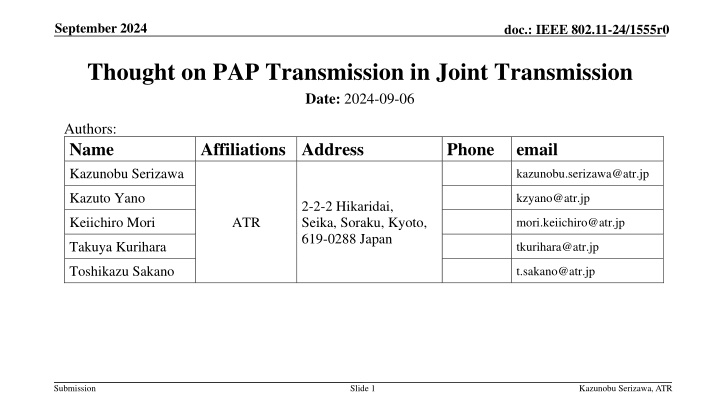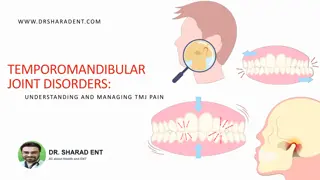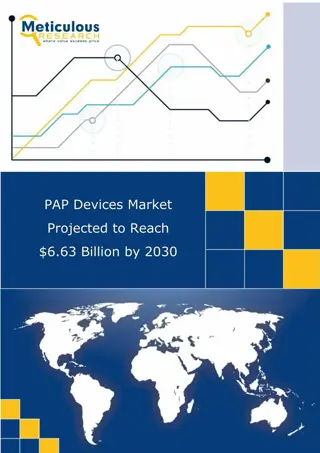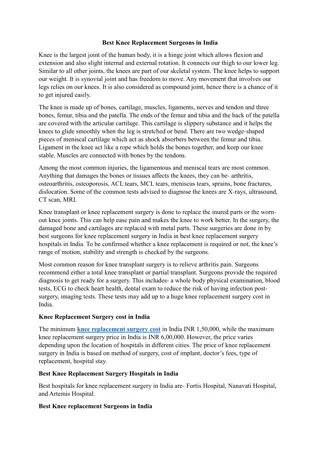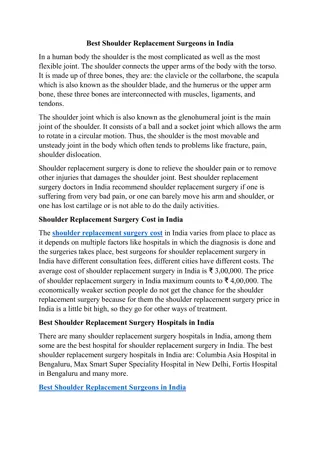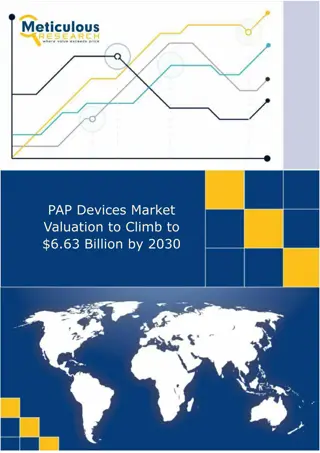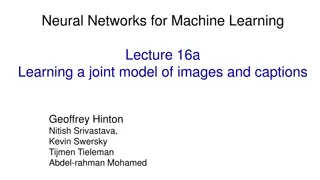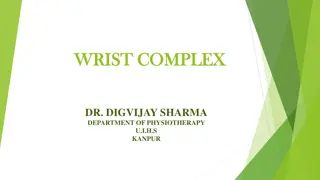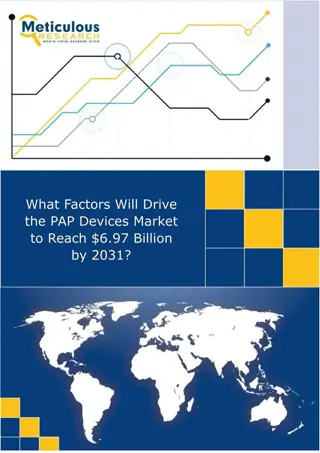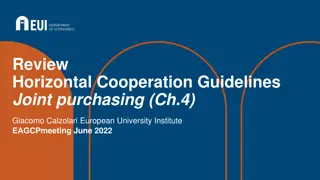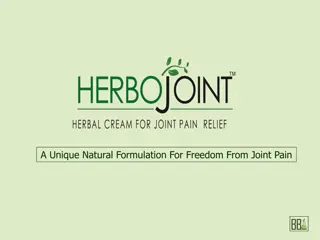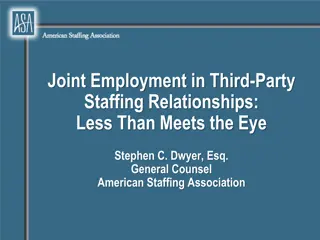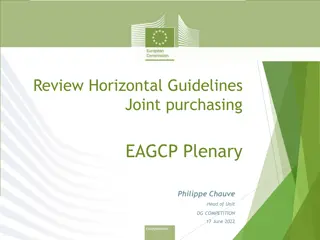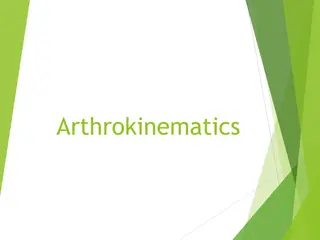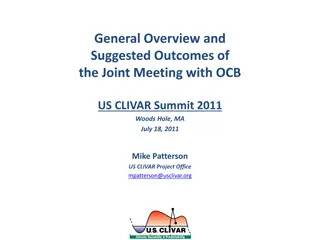Thought on PAP Transmission in Joint Transmission
This document delves into a possible solution for transmitting data from an Initiating AP to a target OBSS STA via a Participating AP in a Joint Transmission scenario. It discusses the challenges and proposes an approach using encapsulation to simplify the process and avoid dual association complexities.
Download Presentation

Please find below an Image/Link to download the presentation.
The content on the website is provided AS IS for your information and personal use only. It may not be sold, licensed, or shared on other websites without obtaining consent from the author.If you encounter any issues during the download, it is possible that the publisher has removed the file from their server.
You are allowed to download the files provided on this website for personal or commercial use, subject to the condition that they are used lawfully. All files are the property of their respective owners.
The content on the website is provided AS IS for your information and personal use only. It may not be sold, licensed, or shared on other websites without obtaining consent from the author.
E N D
Presentation Transcript
September 2024 doc.: IEEE 802.11-24/1555r0 Thought on PAP Transmission in Joint Transmission Date: 2024-09-06 Authors: Name Kazunobu Serizawa Affiliations Address Phone email kazunobu.serizawa@atr.jp Kazuto Yano kzyano@atr.jp 2-2-2 Hikaridai, Seika, Soraku, Kyoto, 619-0288 Japan Keiichiro Mori ATR mori.keiichiro@atr.jp Takuya Kurihara tkurihara@atr.jp Toshikazu Sakano t.sakano@atr.jp Submission Slide 1 Kazunobu Serizawa, ATR
September 2024 doc.: IEEE 802.11-24/1555r0 Introduction Joint Transmission (JT) is a way to increase the user throughput by cooperating multiple APs ([1-10]). It is realized by collaborating an Initiating AP (IAP) that is associating with the STA with one or more Participating AP (PAP) that are not associating with the STA. It means PAP needs to transmit DATA to the target STA in OBSS. This contribution shows a possible way for the DATA transmission from the IAP to the STA via the PAP. Submission Slide 2 Kazunobu Serizawa, ATR
September 2024 doc.: IEEE 802.11-24/1555r0 Recap: Joint Transmission Joint Transmission (JT) is a way to increase the user throughput, especially in less-scattering (LOS) environment, by transmitting different user data from multiple APs simultaneously to a single STA . JT is realized by collaborating an IAP associating with the STA with one or more PAPs that are not associating with the STA. BSS OBSS DATA 2 AP2 (PAP) AP1 (IAP) Through in-band or backhaul Simultaneous transmission from multiple APs DATA 1 DATA 2 Associated STA Submission Slide 3 Kazunobu Serizawa, ATR
September 2024 doc.: IEEE 802.11-24/1555r0 Regular Transmission and Joint Transmission Regular transmission (i.e., not using JT) follows two steps: (1) AP1 transmits DATA1 and DATA2, and (2) the STA returns BA to AP1. JT follows three steps: (1) AP1 (IAP) distributes DATA2 to AP2 (PAP), (2) AP1 transmits DATA1 and AP2 transmits DATA2 simultaneously, and (3) the STA returns BA to AP1. BSS DATA1 BSS (2) DATA1 DATA2 (1) (3) BA AP1 (IAP) STA (1) (2) (2) BA AP1 STA DATA2 DATA2 AP2 (PAP) Regular transmission Joint Transmission Submission Slide 4 Kazunobu Serizawa, ATR
September 2024 doc.: IEEE 802.11-24/1555r0 Transmission from PAP to OBSS STA The PAP is required to transmit DATA to the target (OBSS) STA. Dual association can be possible, but it might make the system complex. Management of sequence number and scoreboard may be complex. Packet handling may also become complex. AP1 and AP2 may use different security settings. How can the PAP transmit DATA from the IAP to the STA without doing dual association? Submission Slide 5 Kazunobu Serizawa, ATR
September 2024 doc.: IEEE 802.11-24/1555r0 PAP DATA transmission using encapsulation A possible solution is to generate the MPDU for DATA2 in AP1. (1) AP1 generates MPDU for DATA2 (MPDU2) as if AP1 had directly transmitted it to the STA. (2) AP1 transmits PPDU for Relay (PPDUfR) that encapsulates MPDU2 to AP2. (3) AP2 extracts the encapsulated MPDU2 from the received PPDUfR, and reframes it into PPDU2 to transmit toward the STA. (4) The STA receives them as if it were transmitted from AP1. DATA1 DATA2 MPDU1 PPDU1 (1) MPDU1 MPDU2 (2) MPDU1 MPDU2 STA AP1 (IAP) MPDU2 MPDU2 PPDUfR PPDU2 (4) AP2(PAP) Extract (3) Reframe MPDU2 Submission Slide 6 Kazunobu Serizawa, ATR
September 2024 doc.: IEEE 802.11-24/1555r0 Benefits of PAP DATA transmission using encapsulation This PAP DATA transmission using encapsulation would realize JT more easily than doing dual association in terms of the points as follows: The IAP is responsible for both DATA1 and DATA2. Therefore, management of sequence number and scoreboard can be done as in the regular transmission. Since the IAP receives all data from the Distributed System, packet handling is easy. The IAP generates MPDU for DATA2. Therefore, the PAP does not need to care the difference of security setting between the IAP and PAP. Submission Slide 7 Kazunobu Serizawa, ATR
September 2024 doc.: IEEE 802.11-24/1555r0 Summary This contribution shows a possible way for the DATA transmission from the PAP to the (OBSS) STA in JT. The IAP generates the MPDU for the DATA transmitted from the PAP to the STA, as if the IAP had directly transmitted it to the STA. It has several benefits as follows: Management of sequence number and scoreboard can be done as in the regular transmission. Since the IAP receives all data from the Distributed System, packet handling is easy. The PAP does not need to care the difference of security setting between the IAP and the PAP. Submission Slide 8 Kazunobu Serizawa, ATR
September 2024 doc.: IEEE 802.11-24/1555r0 References [1] Multi-AP Joint Transmission Simulations with Impairments , IEEE 802.11-23/1843r0 [2] Multi-AP Simulations: framework and Joint Transmission results , IEEE 802.11-23/1176r1 [3] Joint Transmission for UHR Additional Results , IEEE 802.11-23/0243r0 [4] System Level Simulation of Co-BF and Joint Tx , IEEE 802.11-22/1821r1 [5] Joint Transmission for 11be ,IEEE 802.11-20/0071r1 [6] Consideration on Joint Transmission , IEEE 802.11-19x/1595r0 [7] Multi-AP for reliability with Coherent and Non-coherent transmissions , IEEE 802.11-23/2009r0 [8] Joint Transmission for UHR A Refresher and New Results , IEEE 802.11-22/2188r0 [9] Some thoughts on relay improvement , IEEE802.11-23/2217r1 [10] Consideration on Joint Transmission , IEEE 802.11-24/0444r2 Submission Slide 9 Kazunobu Serizawa, ATR
